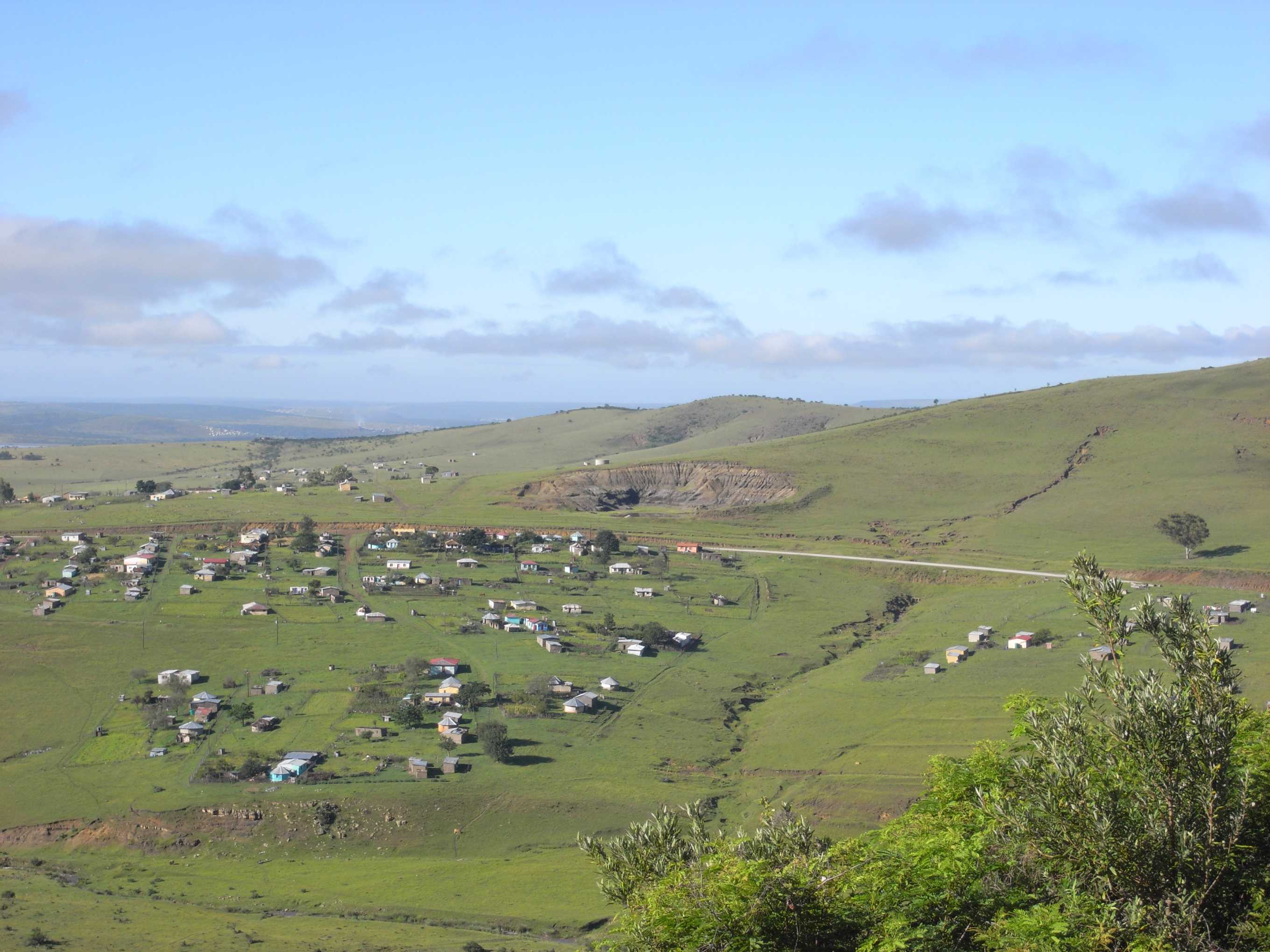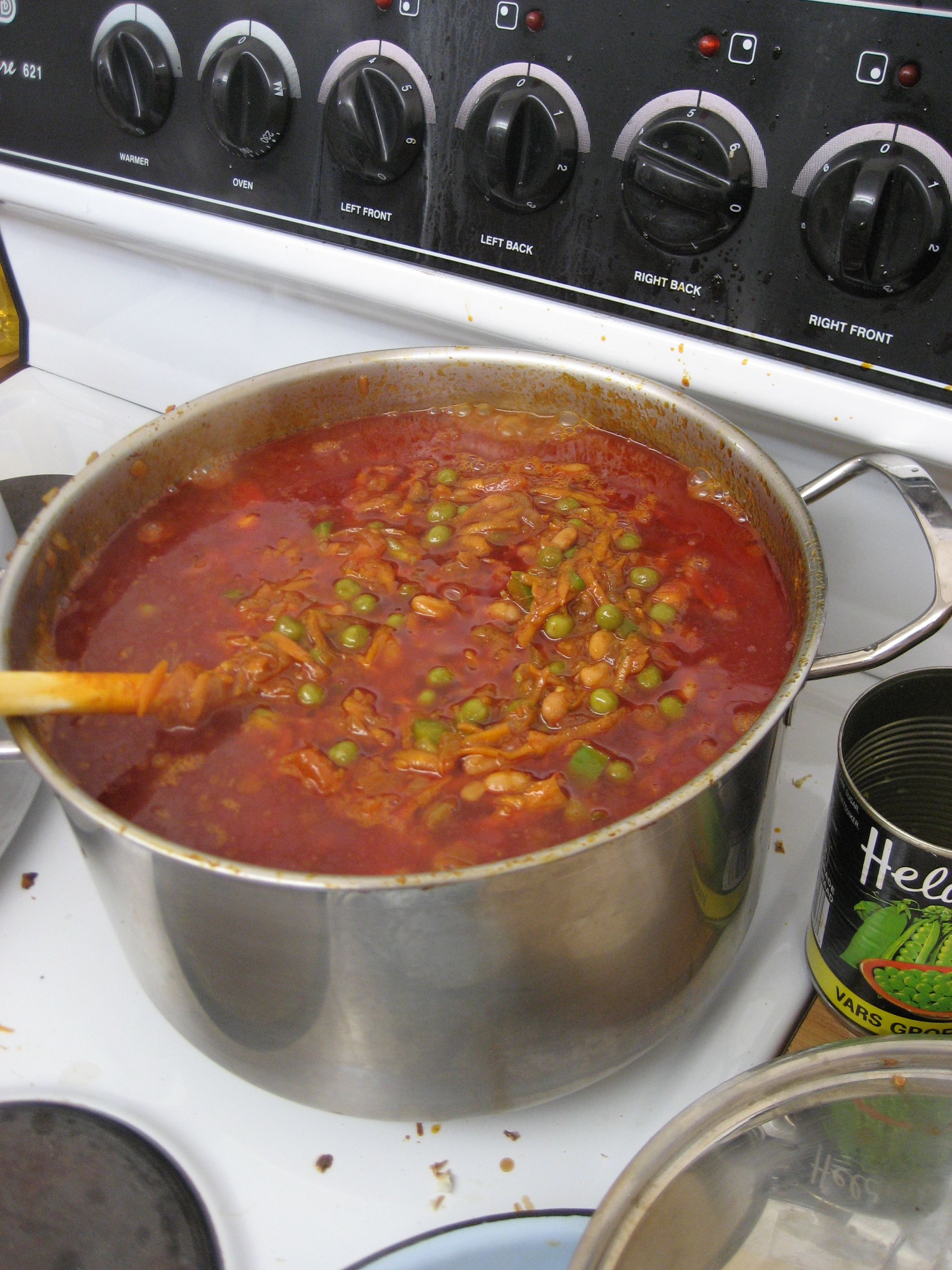|
Samp
Samp is a food made from dried corn kernels that have been pounded and chopped until broken, but not as finely ground as mealie-meal or mielie rice. The coating around the kernel loosens and is removed during the pounding and stamping process. It is eaten across South Africa and by the Lozi and Tonga people of Zambia with sugar and sour milk. It can also be served with gravy and various additives. It is cooked with beans in the Xhosa variant of umngqusho and sometimes eaten with chakalaka. It can also be served with beef, lamb, poultry and in stuffings. "Samp" is of Native American origin, coming from the Narragansett word "nasàump." New Englanders since early colonial times have referred to cornmeal mush or cereal as "samp." Like hominy, samp is prepared from groats (dehulled kernels) of maize Maize (; ''Zea mays''), also known as corn in North American English, is a tall stout grass that produces cereal grain. It was domesticated by indigenous peoples in so ... [...More Info...] [...Related Items...] OR: [Wikipedia] [Google] [Baidu] |
South Africa
South Africa, officially the Republic of South Africa (RSA), is the Southern Africa, southernmost country in Africa. Its Provinces of South Africa, nine provinces are bounded to the south by of coastline that stretches along the Atlantic Ocean, South Atlantic and Indian Ocean; to the north by the neighbouring countries of Namibia, Botswana, and Zimbabwe; to the east and northeast by Mozambique and Eswatini; and it encloses Lesotho. Covering an area of , the country has Demographics of South Africa, a population of over 64 million people. Pretoria is the administrative capital, while Cape Town, as the seat of Parliament of South Africa, Parliament, is the legislative capital, and Bloemfontein is regarded as the judicial capital. The largest, most populous city is Johannesburg, followed by Cape Town and Durban. Cradle of Humankind, Archaeological findings suggest that various hominid species existed in South Africa about 2.5 million years ago, and modern humans inhabited the ... [...More Info...] [...Related Items...] OR: [Wikipedia] [Google] [Baidu] |
Dikgobe
Dikgobe, also known as izinkobe, is a South African word for samp and beans A bean is the seed of some plants in the legume family (Fabaceae) used as a vegetable for human consumption or animal feed. The seeds are often preserved through drying (a ''pulse''), but fresh beans are also sold. Dried beans are tradition ... cooked together. The dish is commonly served at Setswana celebrations of life, such as marriage, and those marking death, the passage out of life. For funerals, dikgobe is one of the two acceptable starches to be served, with sorghum as the other. References South African cuisine {{SouthAfrica-cuisine-stub ... [...More Info...] [...Related Items...] OR: [Wikipedia] [Google] [Baidu] |
Umngqusho
Umngqusho is a South African dish based on samp and sugar beans, usually served with hard body chicken which is called umleqwa in isiXhosa. Traditionally a Xhosa staple meal, it has been adopted by other tribes in South Africa as their staple meal as well. This dish is a staple meal for most South African families, referred to as isitambu (stamped corn) by the Zulu people and umngqusho by the Xhosa people. The Xhosa version, served with butter or fat, was apparently Nelson Mandela's favourite dish. See also * List of African dishes Africa is the second-largest continent on Earth, and is home to hundreds of different cultural and ethnic groups. This diversity is reflected in the many local culinary traditions in choice of ingredients, style of preparation, and cooking techn ... * List of legume dishes References South African cuisine Legume dishes Xhosa culture Nguni {{SouthAfrica-cuisine-stub ... [...More Info...] [...Related Items...] OR: [Wikipedia] [Google] [Baidu] |
Lamb And Mutton
Lamb and mutton, collectively sheep meat (or sheepmeat) is one of the most common meats around the world, taken from the domestic sheep, ''Ovis aries'', and generally divided into lamb, from sheep in their first year, hogget, from sheep in their second, and mutton, from older sheep. Generally, "hogget" and "sheep meat" aren't used by consumers outside Norway, New Zealand, South Africa, Scotland, and Australia. Hogget has become more common in England, particularly in the North (Lancashire and Yorkshire) often in association with rare breed and organic farming. In South Asian and Caribbean cuisine, "mutton" often means goat meat.''Oxford English Dictionary'', 3rd edition, June 2003Italian, make similar or even more detailed distinctions among sheep meats by age and sometimes by sex and diet—for example, ''lechazo'' in Spanish refers to meat from milk-fed (unweaned) lambs. Classifications and nomenclature The definitions for lamb, hogget and mutton vary considerably between ... [...More Info...] [...Related Items...] OR: [Wikipedia] [Google] [Baidu] |
Xhosa People
The Xhosa people ( , ; ) are a Bantu peoples, Bantu ethnic group that migrated over centuries into Southern Africa eventually settling in South Africa. They are the second largest ethnic group in South Africa and are native speakers of the Xhosa language, isiXhosa language. The Xhosa people are descendants of Nguni people, Nguni clans who settled in the Southeastern part of Southern Africa displacing the original inhabitants, the Khoisan. Archaeological evidence suggests that the Xhosa people have inhabited the area since the 7th century. Presently, over ten million Xhosa-speaking people are distributed across Southern Africa. In 1994 the self-governing bantustans of Transkei and Ciskei were incorporated into South Africa, becoming the Eastern Cape province. the majority of Xhosa speakers, approximately 19.8 million, lived in the Eastern Cape, followed by the Western Cape (approximately 1 million), Gauteng (971,045), the Free State (province), Free State (546,192), KwaZulu-N ... [...More Info...] [...Related Items...] OR: [Wikipedia] [Google] [Baidu] |
Chakalaka
Chakalaka is a South African vegetable relish, usually spicy, that is traditionally served with bread, pap, samp, stews, or curries. Chakalaka is said to have originated in the townships of Johannesburg or in the gold mines surrounding Johannesburg, when Mozambican mineworkers leaving their shift cooked tinned produce (tomatoes, beans) with chili to produce a spicy Portuguese-style relish to accompany pap. Many variations of Chakalaka exist, depending on region and family tradition. Some versions include beans, cabbage and butternut squash. For example, canned baked beans, canned tomatoes, onion, garlic, and curry paste can be used to make the dish. It is frequently served at a braai (barbecue) or with a Sunday lunch. It can be served cold or at room temperature. See also * * Indian pickle *List of African dishes *South African cuisine South African cuisine reflects the diverse range of culinary traditions embodied by the various communities that inhabit the country. ... [...More Info...] [...Related Items...] OR: [Wikipedia] [Google] [Baidu] |
Mealie-meal
Mielie meal, also known as mealie meal or maize meal, is a relatively coarse flour (much coarser than cornflour or cornstarch) made from maize (also called mealies) in Southern Africa. It was originally brought to Africa from the Americas by the Portuguese. Its etymology is uncertain, and may be from the Portuguese ''milho'', or the Afrikaans ''mielie'', from obsolete Dutch ''milie'' ("millet, maize"). It is also known by various other indigenous language names depending on the locality or country. It is a food that was originally eaten by the Voortrekkers during The Great Trek, but has become the staple diet of most Southern African countries. Because of its ability to be stored without refrigeration, it is cheap and abundant in all shops and markets. It is a staple food in South Africa, Namibia, Mozambique, Lesotho, Eswatini, Zambia, Zimbabwe, Malawi, Botswana and many other parts of Southern Africa, traditionally made into uphuthu, unga (nshima), sour-milk porridge, pap, ... [...More Info...] [...Related Items...] OR: [Wikipedia] [Google] [Baidu] |
Groats
Groats (or in some cases, "berries") are the hulled kernels of various cereal grains, such as oats, wheat, rye, and barley. Groats are whole grains that include the cereal germ and fiber-rich bran portion of the grain, as well as the endosperm (which is the usual product of milling). Groats can also be produced from pseudocereal seeds such as buckwheat. Culinary uses Groats are nutritious but can be difficult to chew, so they are often soaked before cooking. Groats are used as the main ingredient in soup, porridge, bread, and vegetable-based milk. Groats of many cereals are the basis of '' kasha'', a porridge-like staple meal of Eastern Europe and Eurasia. In North America, ''kasha'' or ''kashi'' usually refers to roasted buckwheat groats in particular. In North India, cut or coarsely ground wheat groats are known as ''dalia,'' and are commonly prepared with milk into a sweet porridge or with vegetables and spices into salty preparations. In Yemen, boiled groats are e ... [...More Info...] [...Related Items...] OR: [Wikipedia] [Google] [Baidu] |
Maize
Maize (; ''Zea mays''), also known as corn in North American English, is a tall stout grass that produces cereal grain. It was domesticated by indigenous peoples in southern Mexico about 9,000 years ago from wild teosinte. Native Americans planted it alongside beans and squashes in the Three Sisters polyculture. The leafy stalk of the plant gives rise to male inflorescences or tassels which produce pollen, and female inflorescences called ears. The ears yield grain, known as kernels or seeds. In modern commercial varieties, these are usually yellow or white; other varieties can be of many colors. Maize relies on humans for its propagation. Since the Columbian exchange, it has become a staple food in many parts of the world, with the total production of maize surpassing that of wheat and rice. Much maize is used for animal feed, whether as grain or as the whole plant, which can either be baled or made into the more palatable silage. Sugar-rich varieties called sw ... [...More Info...] [...Related Items...] OR: [Wikipedia] [Google] [Baidu] |
Barotseland
Barotseland (Lozi language, Lozi: ''Mubuso Bulozi'') is a region between Namibia, Angola, Botswana, Zimbabwe including half of north-western province, southern province, and parts of Lusaka Province, Lusaka, Central Province, Zambia, Central, and Copperbelt Province, Copperbelt provinces of Zambia and the whole of Democratic Republic of the Congo, Democratic Republic of Congo's Katanga Province. It is the homeland of the Lozi people or ''Barotse'', or Malozi, who are a unified group of over 46 individual formerly diverse tribes related through kinship, whose original branch are the Luyi (Maluyi), and also assimilated Tswana people, Batswana tribe of South Africa and Botswana known as the Setswana people#Zulu expansionism and White migration, Makololo. The Barotse speak siLozi, a language most closely related to Setswana. Barotseland covers an area of 252,386 square kilometres, but is estimated to have been twice as large at certain points in its history. Once an empire, the Kin ... [...More Info...] [...Related Items...] OR: [Wikipedia] [Google] [Baidu] |
List Of Maize Dishes
This is a list of maize dishes, in which maize (corn) is used as a primary ingredient. Additionally, some foods and beverages that are prepared with maize are listed. Ingredients Corn can be processed into an intermediate form to be cooked further. These processes include drying, milling, and nixtamalization. * ', a Chickasaw word meaning, 'Cold Flour'. It consists of parched and pounded ''zea'' (maize) before it reaches maturity. A small quantity of meal is thrown into cold water, where it boils and swells as much as common meal boiled over fire. * * * * * ** ** ** * * * Foods Soups, stews, and porridge Corn, in the form of cornmeal or kernels of fresh sweet corn, can be boiled or stewed. * * * * * * * * * * * * * Funche – Puerto Rican cornmeal porridge * * * * * * * Kānga pirau – Māori dish made of stepped fermented kernels, from New Zealand * * * Mămăligă with milk (usually, of cow, but also of sheep or goat), as the first course, ... [...More Info...] [...Related Items...] OR: [Wikipedia] [Google] [Baidu] |




